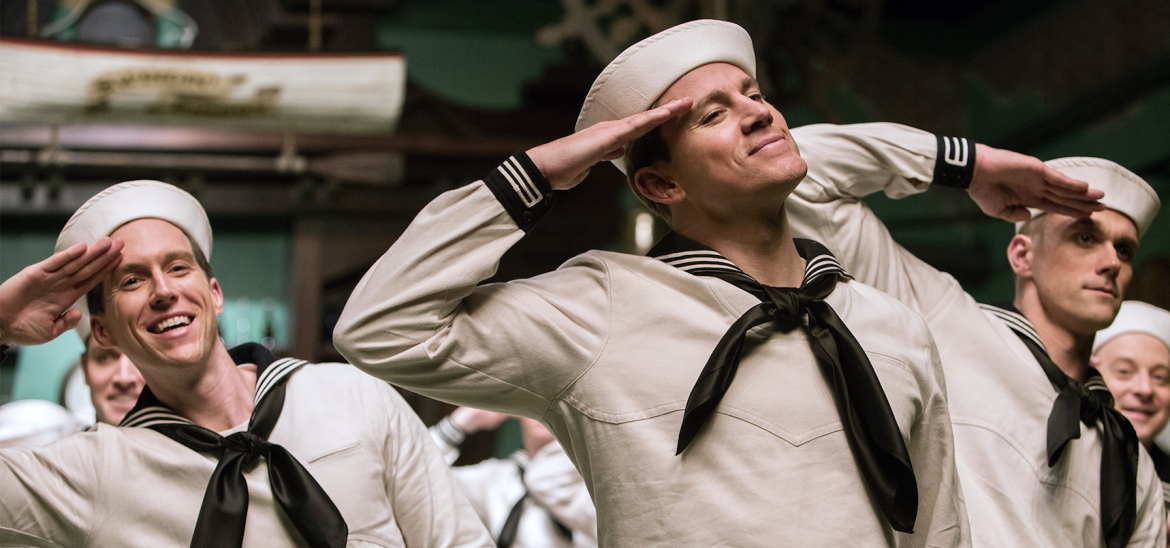Into Film Clubs
Find out everything you need to know about starting an Into Film Club.



Hail, Caesar! is the latest dispatch from cult directors the Coen Brothers - an anarchic and exuberant send-up of the excesses of 1950s Hollywood. Taking things one step closer to the stars than in Barton Fink - the Coens' previous Tinseltown-set film - Hail, Caesar!'s riotous comedy sees studio fixer and physical producer Eddie Mannix working around the clock to try and ensure his studio's stars are seen in their best light.
In Hollywood's former studio system, which dominated the industry throughout the 1920s-60s, actors were contracted to work exclusively for one studio, creating picture after picture. Under certain circumstances, stars could be loaned out to other studios for particular productions, and some would have to undergo enforced changes of image to ensure that they were always a credit to the studio they represented. For actors, the studio system was a double-edged sword. Stars were always very well looked after (so long as it was in the studio's best interests), but the arrangement also took control of an actor's career out of their own hands, as performers were assigned films to work on without any say, and few actors were willing to rebel and risk biting the hand that feeds.
In Hail, Caeser! Josh Brolin plays studio fixer Eddie Mannix, a morally challenged man who schedules a daily visit to the confession box of his local church in between dealing with his studio's never-ending crises. Acting as the thread that holds the film together, we follow Eddie as he makes his rounds, always ensuring he's in the right place at the right time to be on top of any issues that may arise, ranging from absent stars, to disgruntled directors, and plenty worse. Through his eyes we experience the magic of creation that takes place on a Hollywood studio lot, flitting between sound-stages, and witnessing the whole range of genre studio pictures that the system used to churn out.
Populating Eddie's fictional Golden Age studio - named Capitol Pictures - are a fine range of today's own screen talent, with George Clooney taking centre stage as Baird Whitlock, a vain and naïve leading man who has more integrity on the big screen than he does in real life. When Whitlock is kidnapped in the middle of making one of the studio's big-budget features, it's yet another problem for Eddie to solve.
Scarlett Johansson plays DeeAnna Moran, a cynical, chain-smoking, bathing beauty, modelled on swimming starlet Esther Williams, who is in a moral pickle that also requires Eddie's urgent attention, while, in a move of inspired casting, Channing Tatum plays Burt Gurney, a dancing sailor straight out of a Rodgers and Hammerstein picture, evoking films like South Pacific (and with more than a nod to Singin' in the Rain).
Rising star Alden Ehrenreich plays Hobie Doyle, an apparent country bumpkin who's known for his acrobatics on horseback in musical cowboy flicks that are along the same lines as Son of Pale Face. Doyle finds his acting abilities stretched to the limit when he's moved over to a David Lean-style picture, directed by an uppity and exacting Ralph Fiennes.
The film takes its title from the studio's leading production, Hail, Caesar!, which is a pastiche of such lavish biblical epics as Ben Hur, and The Ten Commandments. Swords-and-sandals films were popular throughout the 1950s and were given massive budgets, big-name stars and over-the-top set-pieces to feed the public's demand. The Aviator is a similarly loving yet nuanced insight into the production excesses of Hollywood, focusing on the films of entrepreneur and director Howard Hughes, whose works includes The Outlaw.
To achieve authentic period detail, the production team researched studio archives, looked up set and costume designers of the time, and were able to speak to craftsmen and women who worked on the studio lots for behind-the-scenes anecdotes. Roger Deakins, the film's cinematographer, used colour to transition between the neutral businesslike tones of Eddie's office to the bright, vibrancy of the sound-stages where the pictures came to life. Scarlett Johansson's scenes even took place in the very same pool that was built for Esther Williams, as the popularity of her water ballets took off. Led by costume designer Mary Zophres, a regular collaborator of the Coens, some 2,500-3000 outfits had to be sourced for the film, and - again - authenticity was paramount. In fact, the historical accuracy went right down to the underwear worn by the actors!
Given their idolisation on screen, creating and maintaining an image for the studios' actors - no matter how false - became a vital part of the film industry. Film stars were responsible for representing American ideals and values, while also providing a means of escapism. This was especially important during the onset of McCarthyism, when Hollywood was placed under scrutiny for alleged Communist sympathisers. This infamous era was depicted in the recent biopic of persecuted screenwriter Dalton Trumbo. Characters such as Eddie Mannix were indispensable for damage control, keeping scandals out of the papers, and setting up romances and marriages between the stars to pull focus away from any relationships that might not hold up to scrutiny.
Find out all about Hollywood and politics, and how Trumbo beat the blacklist, here.
Studio fixers often had a love/hate relationship with the press, as it could both create or destroy an actor's career. Poison-pen columnists Thora and Thessaly Thacker are a constant presence in Hail, Caesar!, stalking the studio lots looking for juicy tidbits, with Eddie responsible for placating or misdirecting them. Tilda Swinton - who plays both Thora and Thessay - says of her characters: "[They] are part of the myth-making machine that was so important back then. It was a dream world made up of humans who were not always so dreamy. At the same time as they're involved in knocking these gods and goddesses off their pedestals, they also need to build them up." Another film that exposes how flamboyant but misleading public images can be constructed is the Liberace drama Behind the Candelabra, while the vicious create-and-destroy cycle of the press can be witnessed in action to devastating effect in Oscar® winning documentary Amy.
Many of the issues presented as comedically outdated in Hail, Caeser! can be read as commentary on the fact that, unfortunately, some of the more problematic aspects of the film industry - such as the extreme scrutiny we place on celebrities - still hasn't gone away. While the Golden Age of Hollywood may seem more than a little tarnished on closer inspection, it's clear that the Coens still hold a torch for it, no matter its flaws. As the old adage says - the show must go on.

Get in touch with your article ideas for the News and Views section.